Yes, that’s right, a talking cow and various other animals in Ubuntu. And no, not the actual ones and they do not really talk or moo but their ASCII forms that display messages which you type. This is through the cowsay package that is available in most Linux distributions.

This example shows how to install and use it in Ubuntu.
Install cowsay:
Install it from the command line through the following command:
sudo apt install cowsay
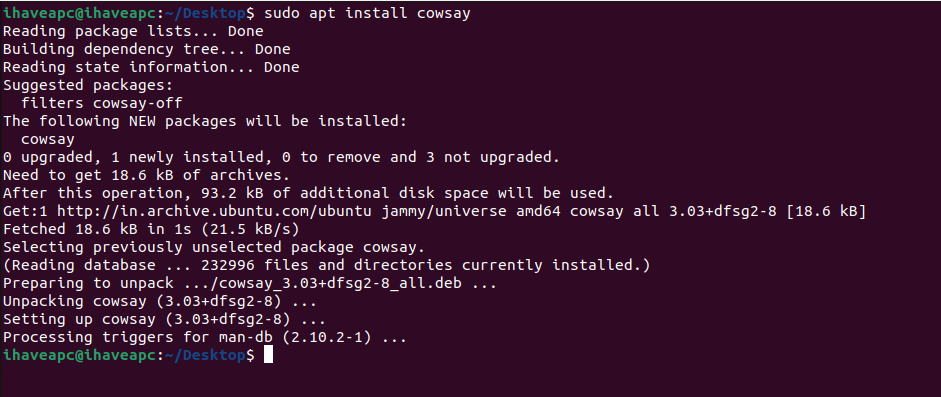
Using cowsay:
After it is installed, run it:
cowsay message
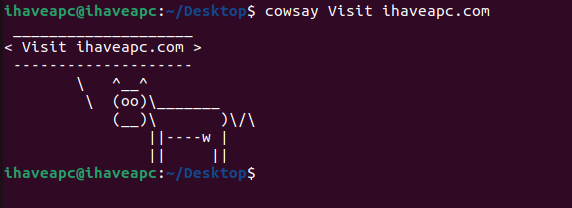
An ASCII art cow will be displayed with the entered message. Pretty cool. 🙂
There are different types of cow modes too in cowsay. Using these will show the cow with different expressions/modes.
Some of them are:
| Mode | Parameter |
| Borg | -b |
| Paranoid | -p |
| Greedy | -g |
| Tired | -t |
| Youthful | -y |
To use a specific mode, use the parameter for it. Â
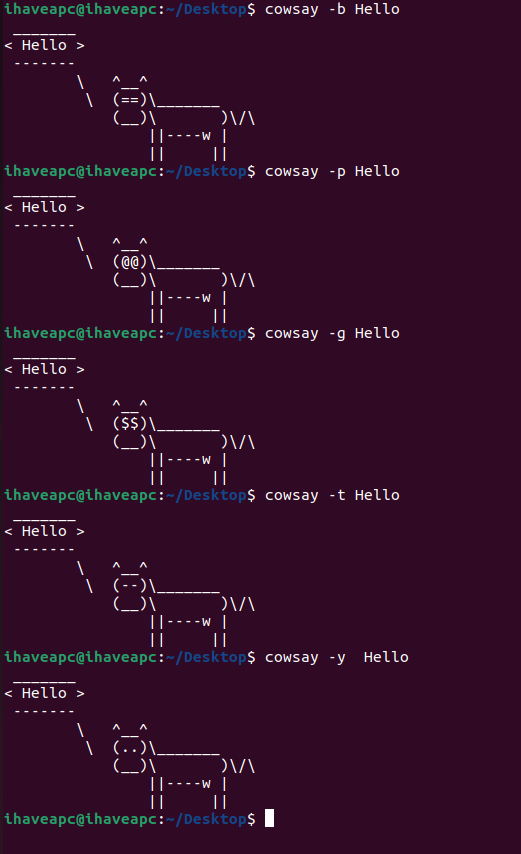
Besides that, you can also make the cow think messages rather than say them. Use the cowthink command for that.
cowthink message
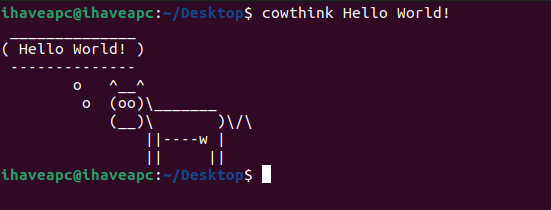
The ASCII cow displayed will now have thought bubbles with the entered message as it is thinking.
Other animals:
The cowsay package also includes other animals. You can see the list of included animal names with the -l flag, it would be in the cows sub-directory in cowsay:
cowsay -l

Using different animals:
To change the default ASCII animal from cow to say a fox, kangaroo, or others, use the -f flag followed by the animal’s name and the message.
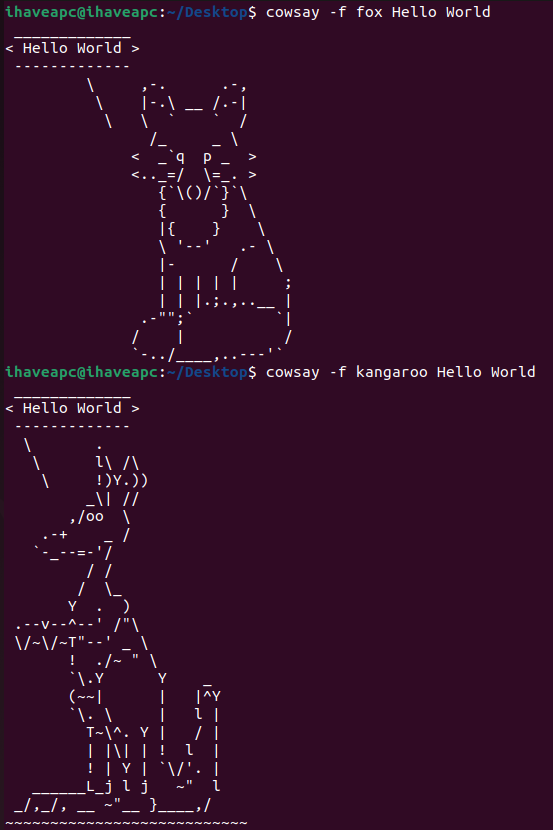
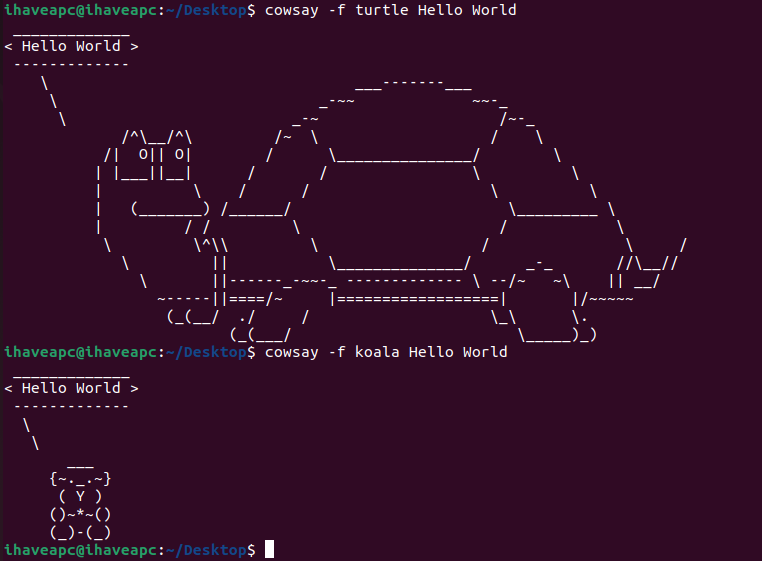
Man page and help:
As with all the Linux commands, you can get the extensive documentation for this using the man page online or from the Terminal:
man cowsay
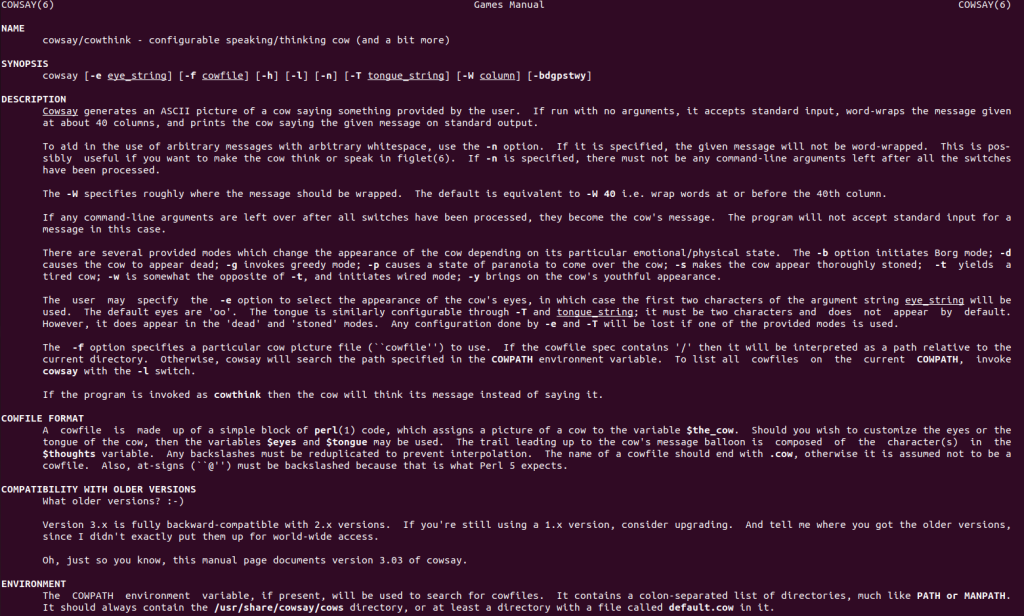
There is also the basic help command that you can invoke with the -h flag:
cowsay -h

This is a fun Linux command to use to lighten up your terminal and make it less boring if you find it so. Also, there are other cool command line tools which can transform images into ASCII art if you would like to try.
All done.